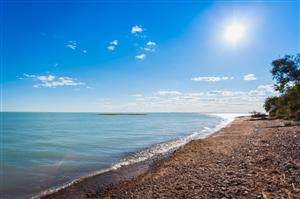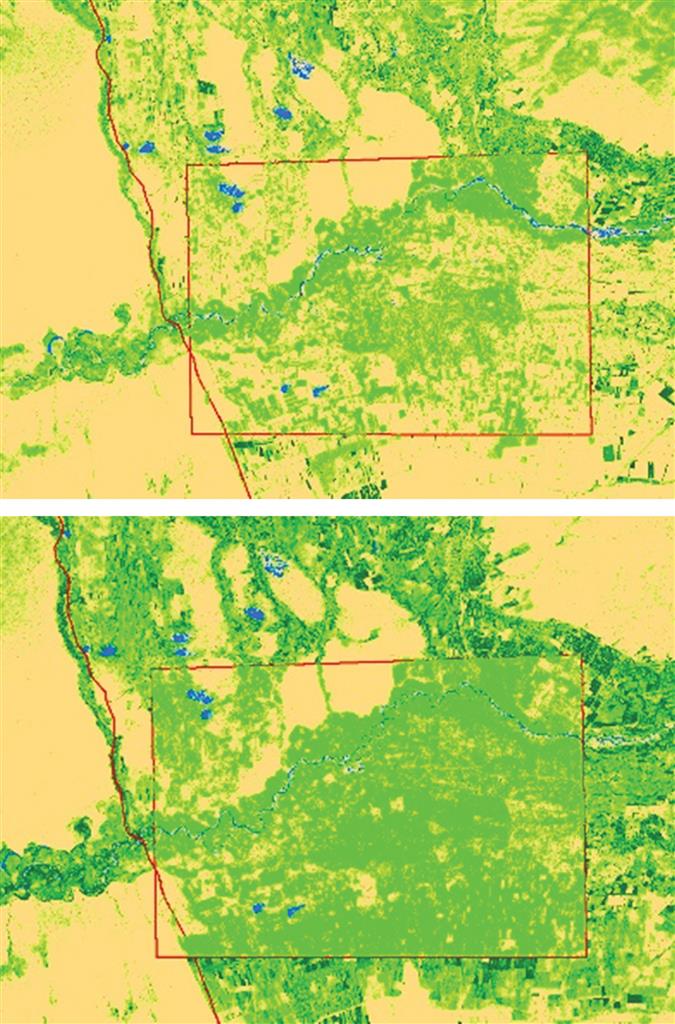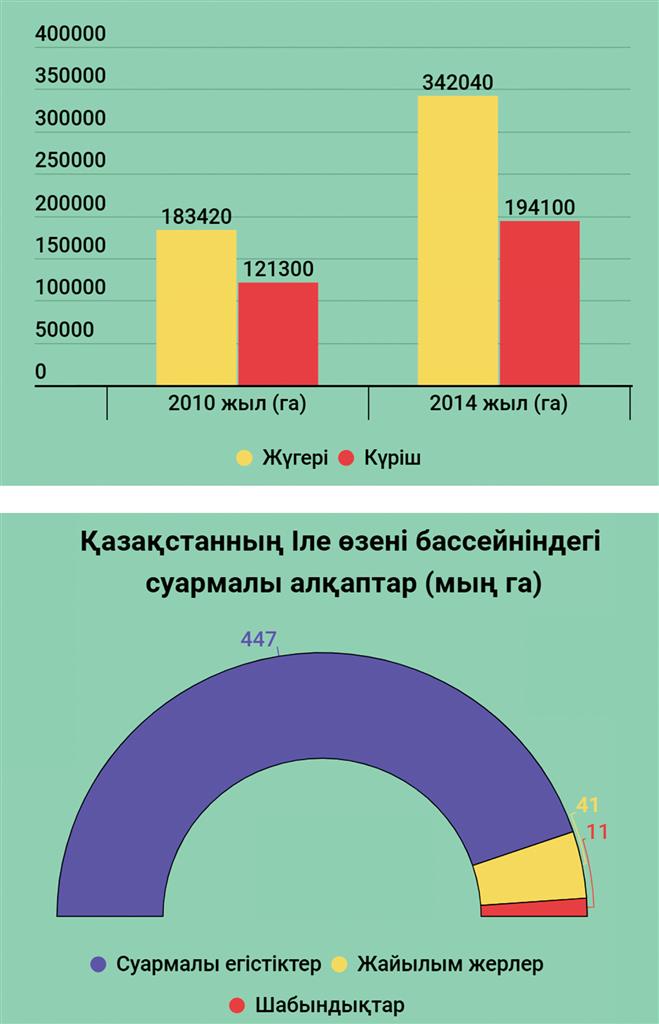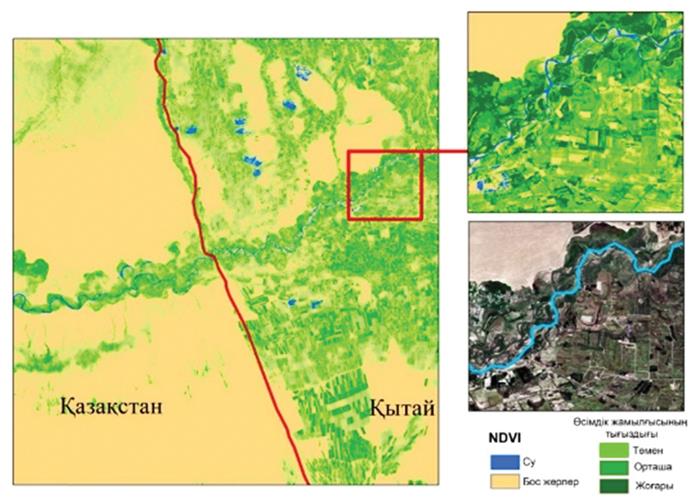- Main page
- News
"COMPETITION" IN BALKASH: ECONOMY V / S ECOLOGY
6/30/2021
In 1962, US President John F. Kennedy said, "Forget about oil, think about water." Indeed, the Aral Sea crisis began in the 1960s. We have left half a century behind, but the issue has not lost its relevance. Once again, we have a "headache" in Balkhash. Because the fate of the Aral Sea may be repeated in Balkhash. This is a warning from international experts, not ours.
Scientists warn that the "Aral Sea syndrome" can be observed in other parts of the world. After all, the main cause of drying of the Aral Sea is man-made, environmental disasters associated with the accumulation of irrigation water. The main rivers in Central Asia are transboundary, which is probably why there is competition between irrigated agriculture and natural ecosystems. For these reasons, as the economic importance of Lake Balkhash increases, so do the environmental problems. Even the United Nations has said the lake is in danger of collapsing. The main reason for our concern is the decrease in river flow. If used inefficiently, the water level will drop. The current situation is exacerbated by the industrial waste of the mining and metallurgical plant.
These issues were studied by the Al-Farabi Earth Remote Sensing Center. Because it is possible to conduct surface and space monitoring of water resources using remote sensing, and to identify emergencies and their consequences, to assess their consequences. It is implemented by the technology of the combined geographic information system.
Toxicological manifestations of Lake Balkhash can be seen in heavy metals flowing along the rivers through precipitation, as well as industrial waste. Trace elements - indicators of water quality and pollution. Due to their biomigration activity, they significantly affect the processes of photosynthesis and respiration. It plays an important physiological role in the life of aquatic organisms and acts as a catalyst for redox processes and growth stimulants. Their quantitative and qualitative composition is the result of a combination of natural and anthropogenic factors.
The role of the city of Balkhash in the formation of trace elements in the biota of the lake. Among the pollutants, heavy metals pose a significant threat to aquatic biota. Because, unlike organic pollutants, metals do not decompose or disappear. Only the components of the ecosystem can be redistributed between sediments and biota (shrubs - ed.).
- Heavy metals - a group of non-ferrous metals with a density greater than the density of iron (7.874 g / cm3). These include: zinc, lead, tin, manganese, bismuth, copper, mercury, nickel, cadmium. Many of their compounds, especially salts, are harmful to the body. They do not break down when they enter the body through food, water or air. Kidneys, liver, joints, etc. accumulates in the human body and poses a threat to health. Therefore, the amount of heavy metals in the environment should not exceed the established values, - says Gaukhar Batai, a specialist at the Earth Remote Sensing Center.
Representatives of the center studied the pollution of Lake Balkhash with heavy metals. The work is based on the information bulletin of the Department of Environmental Monitoring on the state of the environment in the country.
- Samples were taken from the villages of Zhideli, Bakanas, Bakanas, D. Kunayev, Tamgalytas, Karatal and Ushtobe along the Ili and Karatal rivers, which flow into Lake Balkhash. Based on these data, a map of heavy metal pollution of surface waters of the Balkhash basin was developed (Figures 1a, 1b). We used data from 2017 and 2020 to obtain a comparable result. As a result, the amount of heavy metals has increased significantly over the past year. For example, in the Tamgalytas gorge on the Ili River, arsenic exceeded the limit of 1.2 permissible discharges (MAC). Near the village of Zhideli, arsenic is 3.1 times higher than the norm, and in the area of the bridge named after D. Kunayev on the Ili River, arsenic is 3.6 times higher than the norm. In Ushtobe on the Karatal River, arsenic exceeded the norm by 1.3 MW, lead by 1.4 MW, - said Ms. Gaukhar.
Water pollution in Lake Balkhash is another problem. If left unchecked, we may not be able to find polluted water for years to come. According to the center's expert, the dynamic changes in the water level and area of Lake Balkhash are directly related to the Ili River. Therefore, the river was analyzed on the basis of space images.
- Five rivers flow into the lake. The largest of them is the Ili River. It provides 80% of the total flow of fresh water. Atyrau ends with Western Balkhash. The Karatal, Aksu, Lepsy and Ayagoz rivers flow into the eastern part of the lake. Their total flow in the lake is 20%. The Ili Delta, with a total area of 8,000 km2, is the largest natural delta and wetland complex in Central Asia. This river is important for the preservation of natural coastal ecosystems, such as the Ili delta and Lake Balkhash, - said Gaukhar Batay.
Ili is a transboundary river flowing through China and the Republic of Kazakhstan. Its upper reaches are located in China. There are three sources - Tekes, Kunes and Kash rivers. Among them, the Tekes Khan River originates in the north, and the Kunes and Kash rivers originate in the Tien Shan Mountains in China. These three rivers are formed by the melting of glaciers in the mountains. As the main flow of Lake Balkhash covers China and Kazakhstan, the lower the water level, the more common it is for China and Kazakhstan.
- The object of study was the Chinese regions of Hocheng, Chapal-Sibosk Autonomous District, Kulja, Ili-Kazakh Autonomous District bordering on Kazakhstan. The total area of land along the Ili River in China is about 132 thousand hectares. As a result, the area under crops in this area increased from 35 thousand hectares in 2018 to 64 thousand hectares in 2020, - said Gaukhar Batay.

"From 1995 to 2015, the volume of irrigated arable land in China increased by 30%," the researchers said. On the Kazakh side, it has not increased significantly.
- The Ili River in China is very suitable for agriculture in Xinjiang. The area under corn, cotton and rice has increased significantly from 2004 to 2010. For example, in 2010 corn increased from 183 thousand hectares to 342 thousand hectares in 2014, rice in 2010 from 121 thousand hectares to 194 thousand hectares in 2014, - said the specialist of the Center for Remote Sensing.

In Kazakhstan, most of Kazakhstan's irrigated lands are located in the Ili River basin. According to statistics, including 447 thousand hectares of irrigated arable land, 41 thousand hectares of pastures and 11 thousand hectares of hayfields. The main crop is wheat. Other important crops are corn, sugar beet, tobacco, fruits, vegetables and rice.

Gaukhar Batay briefed on the work. According to him, the NDVI index was calculated to assess the arable land along the Ili River. NDVI (normalized vegetation index) is standardized and reflects the relative biomass of the plant and its condition. It is also used to monitor drought, water surface monitoring, agricultural production, forecasting and desert mapping.
Camilla Duisen
Cut:
Lake Balkhash is located in the arid zone of Central Asia in southeastern Kazakhstan and is surrounded on all sides by sand and small hills. The lake belongs to the category of inland water bodies and is one of the largest lakes in Kazakhstan. The area is variable: 17 - 22 thousand km2, the length is more than 600 km, the width is 9 - 19 km in the eastern part, 74 km in the western part. The natural dam is divided by the Uzynaral Peninsula into Western and Eastern Balkhash.
The area of arable land along the Ili River in China increased from 35 thousand hectares in 2018 to 64 thousand hectares in 2020. From 1995 to 2015, the area of irrigated arable land increased by 30%.
Mixtures of heavy metals, especially salts, such as zinc, lead, tin, manganese, bismuth, copper, mercury, nickel, cadmium, are harmful to the body. They do not break down when they enter the body. Kidneys, liver, joints, etc. accumulates in the body and poses a threat to health.

